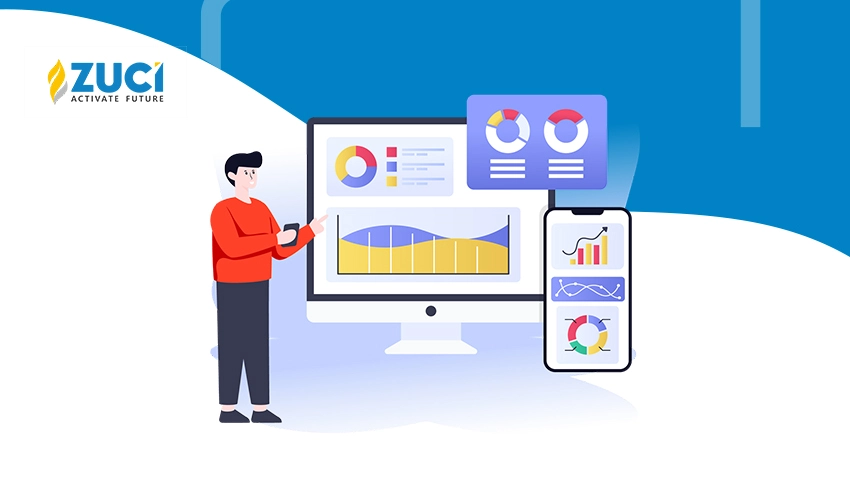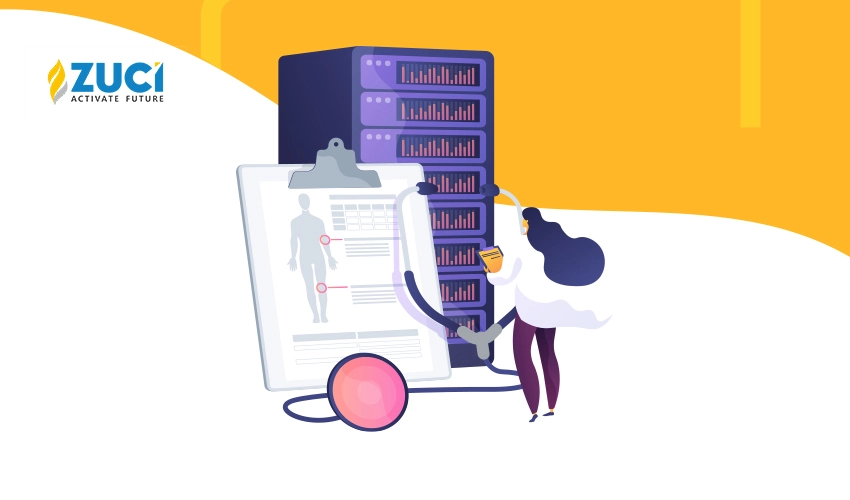Reading Time : 2 Mins
10 Robotic Process Automation (RPA) in Banking Industry for Enhanced Productivity and Growth
Minna is a content developer specializing in software testing and Robotic Process Automation (RPA). She enjoys exploring the intricacies of cutting-edge software and knits comprehensible content that resonates with the audience. PS, she is a book lover.
Over recent years, technological improvements have made banking and finance quicker, more secure, and more trustworthy. Banking organizations have had to discover ways to provide the best user experience to clients to stay competitive in a saturated industry, especially with the rise of virtual banking.
In the coming years, the market for RPA technology is projected to expand rapidly. According to Gartner, the RPA solutions market will grow to $2.4 billion by 2022.
RPA is proven to be a vital element of digital transformation inside the banking industry, which is actively seeking any conceivable opportunity to reduce costs and enhance income.
Why does the banking sector prefer RPA?
The banking sector has extensively used RPA to streamline and automate previously manual processes. Many administrative tasks that impeded workers’ productivity before RPA have also been greatly diminished. Therefore, banks have reduced their reliance on human resources by automating many previously performed by hand. This has had a direct impact on productivity, efficiency, personnel issues, and costs.
Many financial banks have begun to reconsider their business model to capitalise on technology upheaval, and RPA is one of the primary technological solutions in the present situation.
RPA Use Cases in Banking Industry
Targeted automation with RPA, applied for the correct use cases in banking activities, can give substantial value rapidly and at minimal cost, even if end-to-end automation is the ultimate goal.
RPA has been widely used in banking to organise and automate time-consuming financial activities.
RPA bot can quickly gather information while reducing employees’ time and energy.
- Increasing response times
- Improving the output of the workforce
- Enhanced client engagement
- Offering you a competitive advantage
- Incorporating technological innovation into your company
Top 10 RPA use cases in banking
1. Automated loan processing
When a consumer applies for a mortgage, for instance, the lender decides whether to provide the loan depending on the customer’s income, credit score, or number of outstanding loans. The loan processor will then make this information available via credit reporting agencies and other channels, including the sanctioning authority.
Using automation to streamline administrative tasks and reduce human error can help financial institutions save money.
Complex permissions are required for most loan applications, including gathering client information and researching borrowers’ credit histories and previous borrowings. Each piece of information may require up to 15 minutes to process. When RPA bots take over, the time it takes to process a loan drop to less than a few minutes, and the loan approval officer is able to complete tasks more quickly and efficiently.
Robotic process automation (RPA) bots can perform duties on behalf of employees even when that personnel are not present, allowing the loan approval function to proceed more quickly and accurately. Information on the loan application is also provided by bots to the processing officers for further review.
Robotic process automation is able to swiftly gather this information while aiding workers by reducing their workload, decreasing processing times, and boosting output thanks to more productive workers.
2. Automated Fraud Detection
Rising fraud rates were an essential worry for financial institutions. The prevalence of fraud has grown exponentially alongside the rise of sophisticated new technologies. As a result, it becomes laborious for banks to examine each transaction for signs of fraud manually.
An automated fraud detection system can easily flag the records for further review if it has been taught to recognize types of discrepancies. Additionally, it can detect and flag potentially fake identities, which can aid financial institutions in preventing document fraud at an early stage.
Institutions of higher finance and fintech firms use advanced analytics to foresee potential frauds and take precautions before they happen. The operations can be scanned for signs of fraud at the same time. If they come across fraudulent conduct, they can quickly report it and take appropriate action, possibly manually and with the aid of automation technologies. Instead of depending on a guideline approach, they can employ machine learning approaches to identify the frequently subtle links between client behavior and fraudulent potential.
Every day, banks field a large number of inquiries. Questions can range from those concerning loans or accounts to those about debit cards or financial theft. It may be challenging for a customer support team to respond quickly enough to these inquiries.
However, by incorporating robotic process automation (RPA), the bots can handle generic questions, while the human support staff can focus on more nuanced issues.
3. Automated Account Reconciliation
Most of the time at many banks is spent on management to ensure the bank runs smoothly. The process of settling financial accounts involves a wide variety of factors and a huge volume of information. Time is saved, productivity is increased, and compliance risk is minimized with automated reconciliations.

Among the difficulties that are frequently faced throughout the bank reconciliation process are the following:
- Repeated submissions may occur as a result of computer or mishandling.
- Date/time inconsistencies frequently occur due to time region variances, computer clock, transaction timing, and local time cut-offs.
- A single bill with several transfers makes the reconciliation process more challenging.
- Differences in date styles among systems can lead to inconsistencies and uncertainty.
- Mistakes in handwritten data with minor errors such as an additional comma, the existence of an unintentional letter, or a simple typo.
Most financial institutions approach this difficulty using traditional methods such as retrieval of filtered data and enforced data processing to guarantee that all entries adhere to a certain standard. This is when the use of RPA in banking comes in.
Here are a few instances where automatic reconciliations came in handy:
- Reconciling your bank accounts means comparing your paper records to your electronic statements.
- When receiving direct deposits, there will be more lengthy bank statements to review.
- Management of the constantly fluctuating exchange rate in foreign currency accounts can be simplified with the help of software.
- The use of an automated balance sheet, exhibited similarly, makes it simple to keep track of all your numbers, regardless of the number of corporations, banks, businesses, or accounts you have.
- Automation aids in keeping correct inter-company accounting without adding unnecessary complexity if business work in various exchanges or across firms.
- Vendors and suppliers outside the company must be paid on time and accurately accounted for if the company wants to maintain good working ties with them. Without any effort, thanks to automation tools.
An RPA functions by extracting essential files and information. This could take the shape of registration records, files, etc. It then does a simple review to see if there are any differences. The data is then checked at the transaction level to identify mismatches and discrepancies. The RPA will then analyze the reconciling items, correct any problems, and obtain approvals. The entries are finished, and changes are blocked once approved.
Finally, rapid completion of financial closing is made possible by using automated reconciliation. In addition, there is no room for error on account of human intervention so you can trust the results. Quickly comparing statements and being notified of discrepancies is a huge time saver for accountants. If the system detects a need to examine anomalies, it will notify a human operator.
4. Automated customer service
RPA (such as natural language processing) makes use of AI to mimic human behavior and communicate with humans in a natural language, while robotic process automation (RPA) can automate manual, repetitive, and rule-based operations.

By decreasing the need for humans to do repetitive tasks and expanding the scope of processes, RPA helps businesses save money. With the help of RPA, businesses may boost revenue by enhancing customer experiences and lead-generation efforts.
- Outside of regular business hours
Majority of IT executives (57%) believe that their departments may save 10–50% of their budgets by implementing automation technology.
Companies may communicate with customers 24/7 with a customer care automation platform. Customers can contact banks on weekends and holidays. Chatbots never get tired or bored, so their replies and assistance are always good. Businesses can save on overtime, maintenance, and other expenses by having their platforms operate outside of office hours. Providing a fantastic customer experience will allow consumers to reach out for assistance or recommendations at their convenience.
- Reduced support expenses while processing millions of inquiries
IBM estimates that annually, companies spend a stunning $1.3 trillion responding to the 265 billion customer service inquiries they get.
Replacing human support employees with AI chatbots saves businesses money. Thus, human agents can prioritize their questions. Customer support automation reduces the number of agents in each vertical, which is divided by product/service type or purchase step.
Automation reduces the cost of hiring, labor arbitrage, rent, and infrastructure. Intelligent automation cuts business costs by 20–40%.
- Revenue growth is facilitated by automated customer care.
Chatbots and voice bots assist customise customer experiences. Every encounter also improves AI assistants. Thus, improving daily.
Delivering an excellent customer experience leads to delighted customers and good word of mouth.
5. Automated regulatory compliance
As the complexity of regulations grows, financial institutions are still grappling with how to bring compliance under control. Forbes predicts regulatory expenditures in the banking industry will consume between 4-10 percent of bank revenue.
Robotic process automation for compliance is one of the methods to streamline a compliance procedure. This paves the way for creating rule-based instructions in the software that can carry out an entire job without any human input. Automating saves time and money.
Regulatory compliance is an area where RPA could be applied to increase effectiveness, efficiency, and production. Some of these advantages could consist of:
- Tasks that are currently manual can be carried out on a 24/7 basis with little oversight.
- Specialists are reallocated to higher-value activities.
- Improvements to the completeness and accuracy of the reports based on the data and documents.
- The capability to further automate the process with each submission cycle by adding logic to the bots in response to changing needs and discovered faults.
6. Automated data entry and management
Customer information collected from diverse sources, data entry, confirming existing customer information, and combining and screening those data are some manual and time-intensive KYC processes that are good candidates for RPA. Using software to eliminate mundane, time-consuming, and error-prone administrative activities is the essence of automated data entry, which helps businesses save money, time, and effort while also boosting productivity and income.
For example, information from a PDF file or printed paper can be read by automated data entry software and transferred to another system or data storage facility like spreadsheets and databases.
Several financial institutions and technology providers are using RPA to automate manual report-generating operations and are seeing a quick return on investment (RoI). Automating the report-generating process entails a variety of operations, such as optimising data extraction from internal and external systems, standardizing the data aggregation process, developing reporting templates, and reviewing and reconciling reports.
7. Automated credit risk assessment
Ineffective credit risk assessment is a common cause of problems for accounts receivable departments in corporations. Accounts receivables experience interruptions due to resource restrictions, time pressures, labor-intensive procedures, banks’ reluctance to provide guarantees due to increased costs, a lack of customer information, and a scarcity of credit grading systems.
Credit risk management as a whole benefit from automation because it is now easier, more efficient, and less expensive to implement. For most medium-sized businesses, this is a great way to safeguard their accounts receivable for the foreseeable future.
● Quicker Onboarding of New Customers
Customers can apply without worrying about forgetting something vital while using an online application form. After then, all this reliable data will be collected in a centralized database. Examine the six crucial areas of a credit application form that the consumer should fill out to collect the most relevant data.
● Removes the Need for Human Credit Scoring
Automatically assigning risk estimates, risk categories, and credit limitations is possible using existing bank data (gathered through the application forms) and pre-written algorithms and procedures configured using various industry-specific best practices. As a result, the analyst’s workload may be reduced significantly.
● Credit Management Standards
Credit risk management is more effective when a standardized process is in place to ensure that important credit transactions are approved through the appropriate chain of command.
● Reduces Bad Debts through Real-Time Credit Risk Control
The C-suite can watch the status of the process as a whole and maintain tabs on its health with the help of a transparent and open system, as well as reports and analytics. Bankruptcy, a drop in creditworthiness, and other developments that could affect bad debts can be spotted immediately using real-time risk monitoring.
● Electronic Mail Transmission Automation
Credit acceptance, credit refusal, and information sharing all necessitate correspondence. Communication via electronic means is preferable to written correspondence. It is possible to save considerable time on letter writing by using premade templates. Emailing correspondence can reduce the time and resources needed to create and send conventional letters.
8. Automated Management of Credit Card Applications
One further area where banks have experienced remarkable gains from RPA-enabled automation is in the handling of credit card applications. Through RPA, users can have their credit cards in as little as a few hours. Robotic process automation RPA bots are capable of navigating across different systems with ease, validating data, performing many rules-based checks, and ultimately deciding whether or not to approve the application. The use of RPA has resulted in a perfectly simplified process overall.
To take advantage of automation-led disruption, a number of the world’s most successful financial institutions have begun rethinking their operating models, and robotic process automation (RPA) is a crucial technology enabler in this context.
9. Techniques for Closing Accounts
Every month, financial institutions field a number of customer requests to terminate their accounts. The account may be closed if the customer does not provide the documentation necessary to maintain the account. The bank processes’ monthly data volume and the associated checklist increase the likelihood of human error.
Utilizing RPA, financial institutions may instantly and routinely remind clients to submit documentation. In addition, the queued requests to close accounts can be processed quickly and with 100% accuracy using the predefined rules. RPA is designed to work in unusual situations, such as when an account needs to be closed because of a lack of Know Your Customer (KYC) compliance. Therefore, the bank will be able to devote more resources to tasks that demand more creativity and less routine.
10. Automated reporting
Regularly, financial institutions like banks must generate SARs, or “suspicious activity reports,” in order to demonstrate compliance with regulations pertaining to fraudulent activities. Traditionally, SAR forms require compliance officials to manually look through all reports and fill in the relevant information. As a result, it’s a really monotonous job that demands a significant amount of energy and time.
With RPA technology that has the ability to generate natural language, this lengthy compliance paperwork may be read, the necessary information extracted, and the SAR filed. When compliance officers provide input on which elements of each document are most relevant to which sections of the report, the RPA software learns to produce optimal results.
The manual report-making procedure is tedious, error-prone, and draining. However, RPA systems have access to all the information and can accurately and swiftly complete the report’s mandatory fields. Robotic process automation (RPA) collects data from various sources, checks its accuracy, organizes the data in a usable manner, and then notifies the appropriate parties at the appropriate times. This will aid decision-makers in developing plans more quickly to obtain an advantage.
This not only helps cut down on operational expenses but it also speeds up the process.
Wrapping up:
To improve the customer experience and get ahead of the competition, banks should think about implementing RPA across all departments. It may seem like a lot of money at first, but the benefits it brings to the company mean it may pay for itself relatively quickly.
Looking to automate your banking processes? Transform your financial institution with Zuci Systems: the trusted RPA implementation partner for banks and credit unions. Our comprehensive Banking RPA Services will help you modernize and automate your processes for increased efficiency and productivity.
Related reads:
Related Posts























